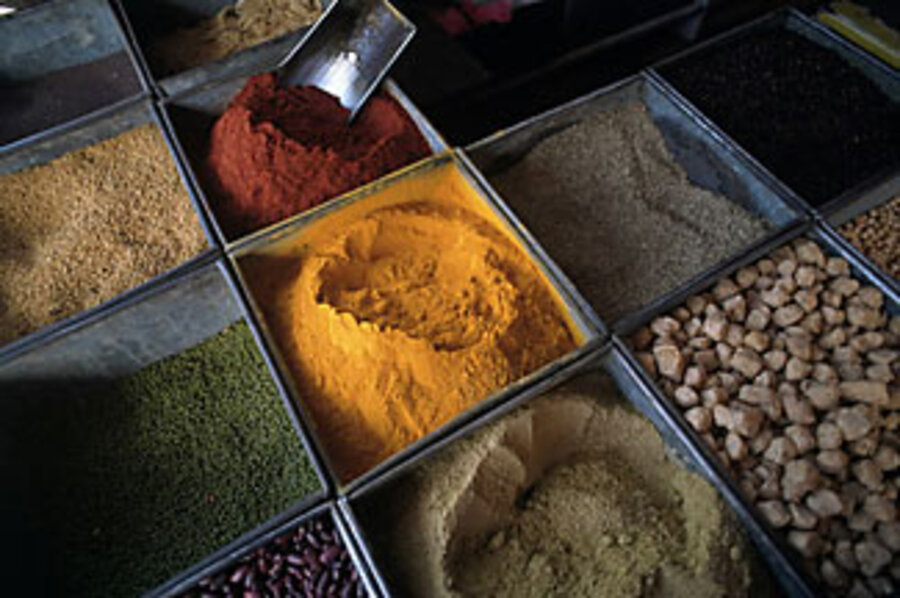A tasty meal at her fingertips
Loading...
I never tasted pizza until I was in high school or Mexican food until I was in college. Today, I occasionally eat mild servings of these ethnic dishes, but I still don't like highly seasoned, spicy food. I guess I am the product of my mother's relatively bland cuisine.
Mom didn't like peanut butter and never had it in the house, so I took cream cheese and jelly sandwiches to school.
For weekend lunches, I was happy with homemade cream of rice soup (consisting of butter, rice, and milk) or creamed eggs on toast (white sauce with hard-boiled eggs seasoned with a pinch of salt and served on toasted, buttered rye bread cut in nine parts like a tick-tack-toe). Even after I was married, when I visited Mom, she would fix these two special lunch treats for me.
A number of years ago, I was visiting a friend with more adventurous food tastes, and she introduced me to tandoori chicken. I participated in this culinary adventure more out of courtesy than enthusiasm.
On a tour of India several years ago, waiters assured me that certain dishes were "not too spicy." My taste buds disagreed. For three weeks, I survived almost exclusively on rice, bananas, and hot naan bread (straight from the clay oven). Recently, I shared this experience with a 23-year-old Indian man, Ashish, who had joined the community orchestra in which I also play.
He guaranteed he could prepare an Indian meal I'd like. So we made plans to get together. "I am a vegetarian," he replied when I suggested chicken for the main course.
I didn't mind. I never met a vegetable I didn't like.
He offered to purchase the ingredients himself and prepare them in my kitchen, but I insisted that we shop together so that I could pay for whatever he needed for the feast.
We met at a local grocery store, where he carefully selected the ingredients he needed: fresh vegetables and a bag of basmati rice.
His eyes lit up when I suggested getting strawberries, oranges, kiwi, and bananas to make a fresh fruit salad for dessert.
Back home working in my kitchen, I asked, "Where did you learn how to cook?"
"My mother taught me, but she didn't share all of her secrets so that I'll need to come home to see her!"
Ashish had brought his own spices: coriander, turmeric, mustard seed, cumin, chili powder, and garam masala. Each one was in a little round metal container inside a larger round metal one, which was about the size of a medium-size cookie tin.
"All chefs have their own spice tin," he informed me. "You can buy one if you'd like."
He explained that traditional Indian cooking served in homes sustained the field workers in the agrarian society. This food was lighter and used less oil than creamier restaurant-style food.
Instructed by Ashish, my husband grated corn off the cob for one dish. While the basmati rice was cooking, I cut up the fruit for dessert.
Ashish did everything else. When he was almost finished preparing the meal, I asked what kind of silverware to set on the table.
"I don't use silverware to eat," he answered.
When the spiced vegetables were tender, he spooned them palettelike on the plate – rice in the middle, surrounded by the two vegetable dishes and some yogurt – as an antidote in case the spices he added made the food too hot for me. After we all sat down, he used his fingers as a utensil, just as he had said. He didn't need a fork or spoon.
The meal was not too spicy, and I enjoyed it.
About a month later, he unexpectedly moved out of town. So I'll need my own spice tin to prepare the recipe his mother taught him. But whenever I do, I won't set any silverware by my place. From now on, I plan to eat the subji using my fingers – just as Ashish did. He taught me a couple of new tricks – not only how to cook a traditional Indian meal but how to eat one!
Subji
2 tablespoons vegetable oil
1 teaspoon cumin seeds
1 teaspoon mustard seeds
1/2 medium-size onion, diced
1/2 large eggplant, cut in medium-size chunks
10 small white mushrooms
1 medium green pepper
1 medium red pepper
3 heaping teaspoons coriander powder
1 teaspoon turmeric powder
1 teaspoon chili powder
1 teaspoon garam masala
Salt, to taste
1 cup rice, cooked
Place vegetable oil in a large pot or wok with a lid over medium-high heat. Be careful not to let the oil burn.
Add cumin and mustard seeds to the hot oil. When these seeds start popping (you'll smell the aromas), quickly add the diced onion and stir occasionally until it just starts to brown.
Lower the heat to medium and add eggplant chunks. After a few minutes, add peppers (including seeds) and mushrooms. Stir as they sauté.
When the veggies are tender, add the coriander powder, turmeric powder, chili powder, and garam masala. Mix well. Add salt to taste.
Serve with cooked rice.
Yield: 2 to 3 servings.





